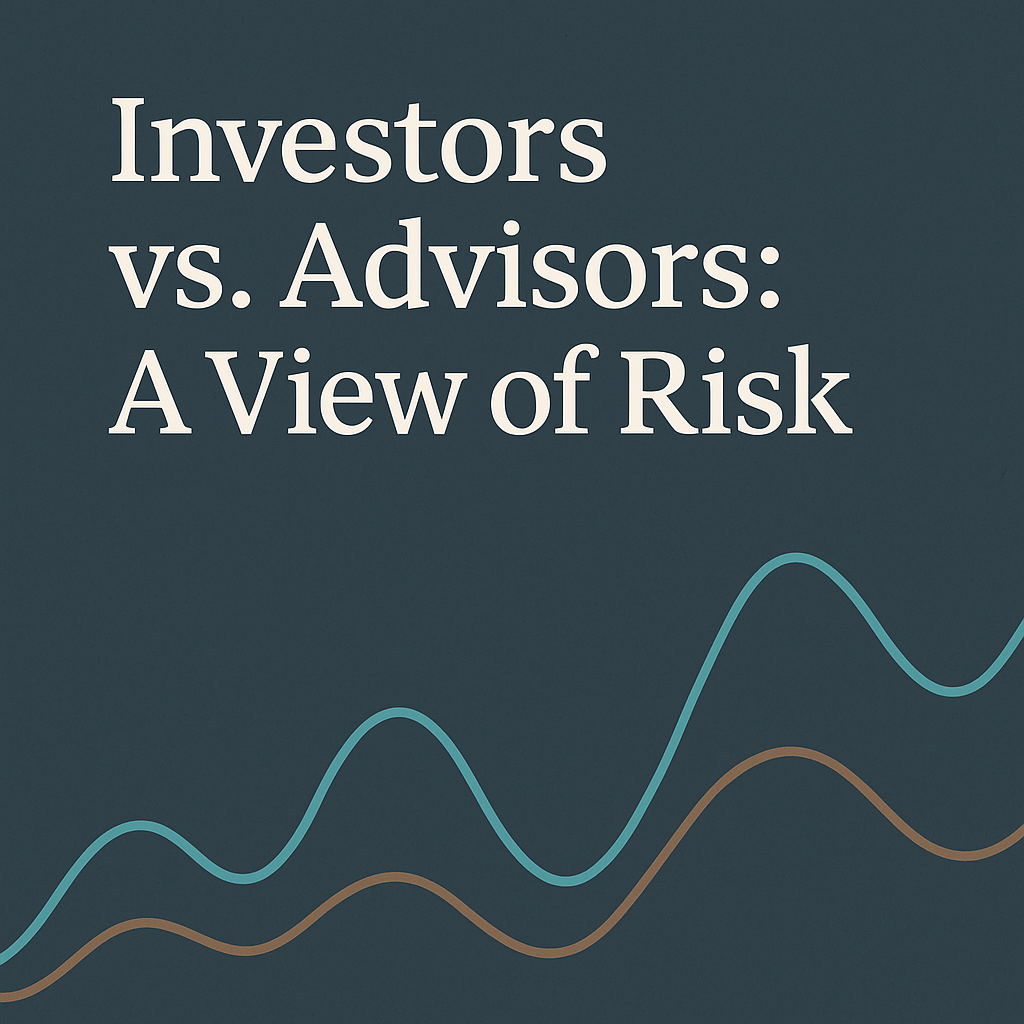Understanding the Disconnect Between Relative and Absolute Risk
For investors, wealth isn’t just about numbers it’s about security, opportunity, and legacy. Yet, when it comes to managing investments, there’s often a disconnect between how financial advisors assess risk and how everyday investors experience it. How to measure investment risk effectively requires bridging this gap.
Advisors view risk in relative terms volatility, diversification, and risk-adjusted returns. Investors, however, often see risk in absolute terms: Did I make or lose money? Could I lose everything? Bridging this gap is key to building a portfolio that preserves and grows wealth while providing peace of mind.
The Advisor’s Perspective: Risk as a Trade-Off
Financial professionals don’t see risk as inherently good or bad—it’s a factor to be managed. They answer the question how to measure investment risk with statistical tools like standard deviation (how much an investment’s returns fluctuate) and the Sharpe ratio (returns relative to risk taken). Advisors focus on balancing different risks to optimize a portfolio, often discussing “risk-adjusted returns” rather than absolute gains or losses.
For example, a well-diversified portfolio may include investments that move in different directions at different times. This approach smooths out returns over time, reducing extreme losses—even if it means giving up the highest gains in a booming market.
The Investor’s Perspective: Risk as Loss
For many investors, risk isn’t an abstract calculation—it’s personal. A portfolio loss isn’t just a number on a statement; it’s the feeling of a financial setback or fear about future goals. Whether it’s retiring on time, funding a foundation, or supporting family, investors tend to think about risk in terms of worst-case scenarios: How much could I lose?
This emotional response can lead to overly conservative investing, prioritizing stability over long-term growth—or the opposite: chasing high returns without understanding the downside.
Finding Common Ground on How to Measure Investment Risk
The best investment strategy blends both perspectives leveraging data-driven insights while respecting an investor’s emotional comfort. Here’s how to bring the two views together:
- Define What Risk Means to You: Reflect on what kind of risk concerns you most. Is it temporary loss, long-term shortfall, or the unpredictability of markets? Sharing this with your advisor helps shape a portfolio that fits.
- Translate Metrics into Meaning: Instead of focusing on volatility percentages, ask: What does this mean in dollars? What could this portfolio lose in a bad year? It makes risk more tangible and easier to accept.
- Balance Stability and Growth: The right mix of conservative and growth investments preserves wealth while positioning for opportunity. Affluent investors often have more flexibility—but it still needs to be purposeful.
- Adjust Over Time: Life changes. Risk tolerance shifts. Revisit your financial plan regularly to ensure it evolves with you.
Risk isn’t about avoiding loss or chasing returns, it’s about understanding uncertainty and making smart decisions within it. When advisors and investors speak the same language about how to measure investment risk, portfolios become more than just numbers; they become tools for confidence and clarity.
For more information on aligning your portfolio with your goals, and to see our approach to wealth management, visit our site 9M Investments.
Get a Free Assessment of Your Current Risk Profile
Ready to ensure your portfolio truly reflects your risk tolerance? Schedule time now to get a free assessment.
This content is developed from sources believed to be providing accurate information. It may not be used for the purpose of avoiding any federal tax penalties. Please consult legal or tax professionals for specific information regarding your individual situation. The opinions expressed and material provided are for general information, and should not be considered a solicitation for the purchase or sale of any security.

